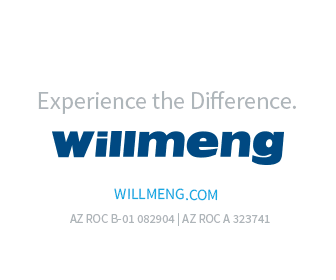COVID-19 Creates a Downshift in Parking Demand

Large revenue shortfalls will accelerate technological advances, conversions and design innovations.
Quarantines and business shutdowns fueled by the COVID-19 pandemic have led to a dramatic decrease in parking demand. Subsequently, many sectors of the economy that depend on parking revenue are facing budget shortfalls this year.
Spothero.com reported in 2020 that the parking industry saw parking volumes in many areas fall by up to 97%, resulting in job losses and furloughs for 50% of the industry’s workforce. Commuter lots had a 50% to 70% reduction in use, while visitor lots saw up to a 95% drop from the same time the previous year, according to a survey by Smarking, a parking software company.
Municipalities are scrambling to recover not only lost parking income but also a dramatic reduction in revenue from fees and fines. A 2019 CarRentals.com survey of parking data for 16 major U.S. cities found that they collected a total of $1.4 billion in annual parking ticket revenue. In 2019, Chicago issued 2.06 million parking tickets. Through June 30 of 2020, the city gave out less than 500,000. New York City projected that it would lose $600 million in parking revenues in 2020.
Lost income from fees and fines, which is typically put into the general fund to support government operations, debt financing, and water and sewer services, will place additional challenges on cities as they attempt to rebound from the pandemic.
The International Parking and Mobility Institute (IPMI) conducted a benchmark survey in 2020. It confirmed that most academic institutions, airports, municipalities and health care facilities expect to experience significant budgetary shortfalls this year, with a substantial factor being the reduction in parking revenue. Educational institutions, which transitioned to almost 100% virtual learning during the pandemic, cited permit refunds and temporary suspension of parking enforcement as having an enormous impact on revenue generation. According to additional research by planning and design engineer consultants Kimley-Horn, airports were among the hardest hit, and parking revenue was down 95% due to travel restrictions.
Technology Solutions
While empty parking lots are being used for COVID-19 screening and vaccinations, owners are devising strategies to recapture lost revenue and make parking as frictionless as possible when local economies reopen. However, many municipalities, such as Chicago, are considering stricter enforcement and higher fines.
According to the IPMI survey, many owners are planning for flexible parking arrangements, accommodation of electric vehicles, and instituting contactless or mobile payment options.
Kimley-Horn suggests that airports and other parking operators can implement new technologies such as web- and app-based platforms that allow reservations and pre-payment, reduce or eliminate cashiered exit lanes, and use license plates or barcodes instead of parking tickets as parking credentials.
Despite the proliferation of technological assistance, there will most likely be an overall decline in parking facility use in the future. Developers and owners must continue to think creatively about repurposing existing structures and future-proofing new buildings that contain parking.
Garage Conversions
Investors had long viewed urban parking garages as a safe bet because parking fees can be easily adjusted and little maintenance is required. However, even before the pandemic, parking demand was declining due to the rise in ridesharing and public transportation use. The pandemic accelerated the decrease in parking demand, and cities have seen more temporary conversions of structured parking. These include hosting farmers markets and the installation of self-storage units and Amazon pickup lockers.
Although it is not necessarily a new idea, garages are increasingly being retrofitted for more permanent uses. Recent examples include the Broadway Autopark, a historic parking garage in Wichita, Kansas, that was converted into a 44-unit apartment building; a parking garage on the Northwestern University campus in Evanston, Illinois, that now houses an incubation center; and the Millennium Parking Garage in Chicago, one of the largest underground parking systems in the U.S., which was recently transformed into an urban fulfillment center. Subterranean garages can also be retrofitted for data center and urban agriculture uses.
Planning for Obsolescence
There will always be a need for some parking in the near term and beyond. The use of private vehicles has ticked upward during the pandemic as people avoided public transportation, and the advent of electric and autonomous vehicles will undoubtedly maintain certain levels of demand. Additionally, parking facilities can be useful sources of revenues for developers as they embark on repurposing the building above.
But as demand shrinks, so can the garage. Increasingly, architects and developers are planning for the eventual conversion of parking structures within a building. For example, the garage in Netflix’s 13-story Sunset Boulevard building in Los Angeles will have flat floors and concrete ceilings that can be easily removed to accommodate other uses such as office. Future-proofing a new building’s parking also involves bigger floor-to-floor heights and increasing live load capacities. Architectural firm BOKA Powell estimates that the initial cost premium to build a future-proofed garage level is $60 to $70 per square foot.
The pandemic was a lesson in the collapse of demand, and it increased many trends that were already in place, such as the use of e-commerce over brick-and-mortar retail. It is unclear how parking will recover. Some of the recent conversions and reduction in parking spaces may be permanent. Businesses may want to keep curbside pickup spaces and dining arrangements that extend into parking areas, and underused garages will continue to house a variety of new uses.
While parking will continue to be part of the revenue equation in the future, it cannot be counted on to generate steady income as it once did.
Jennifer LeFurgy, Ph.D., is the editor-in-chief of Development magazine.







